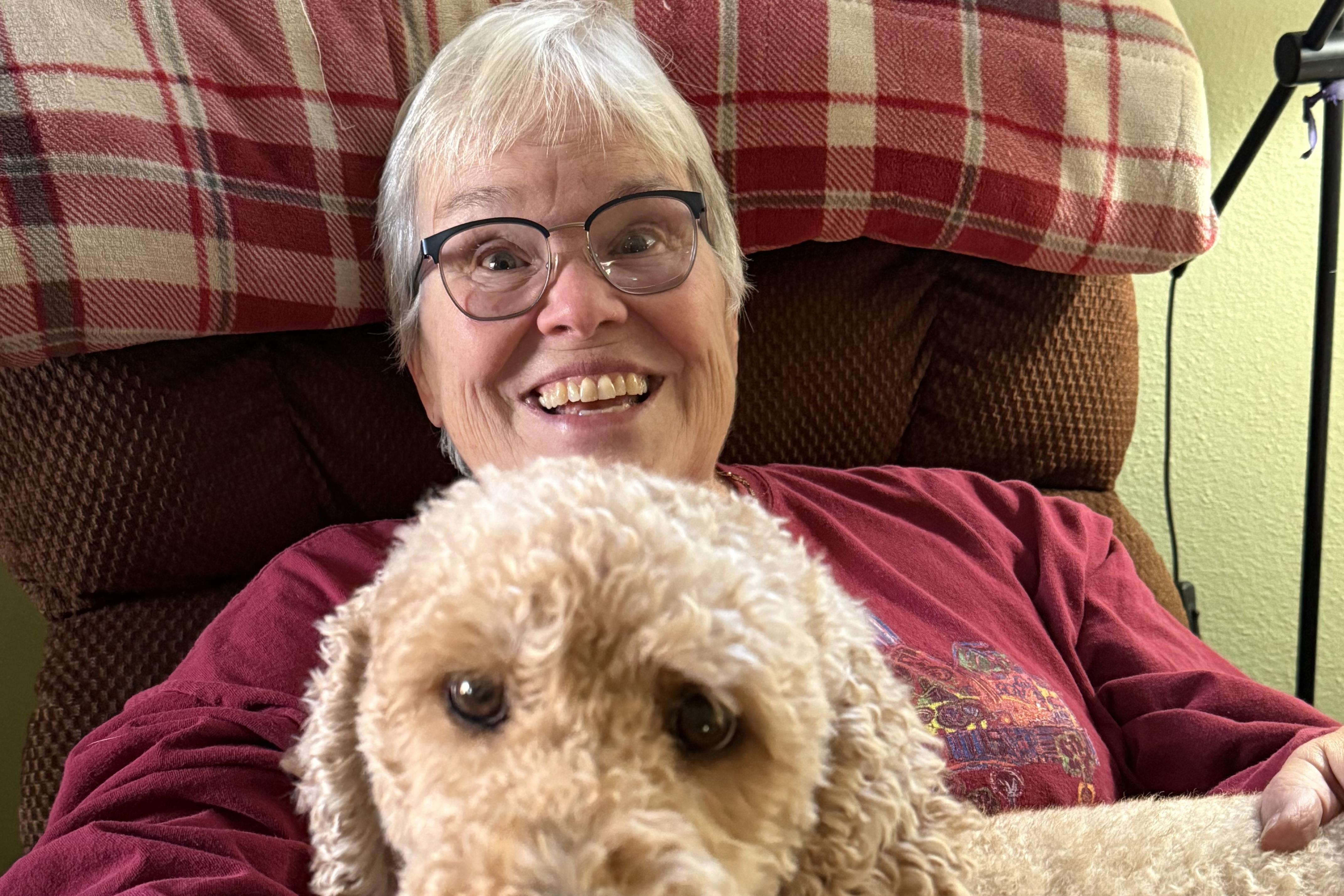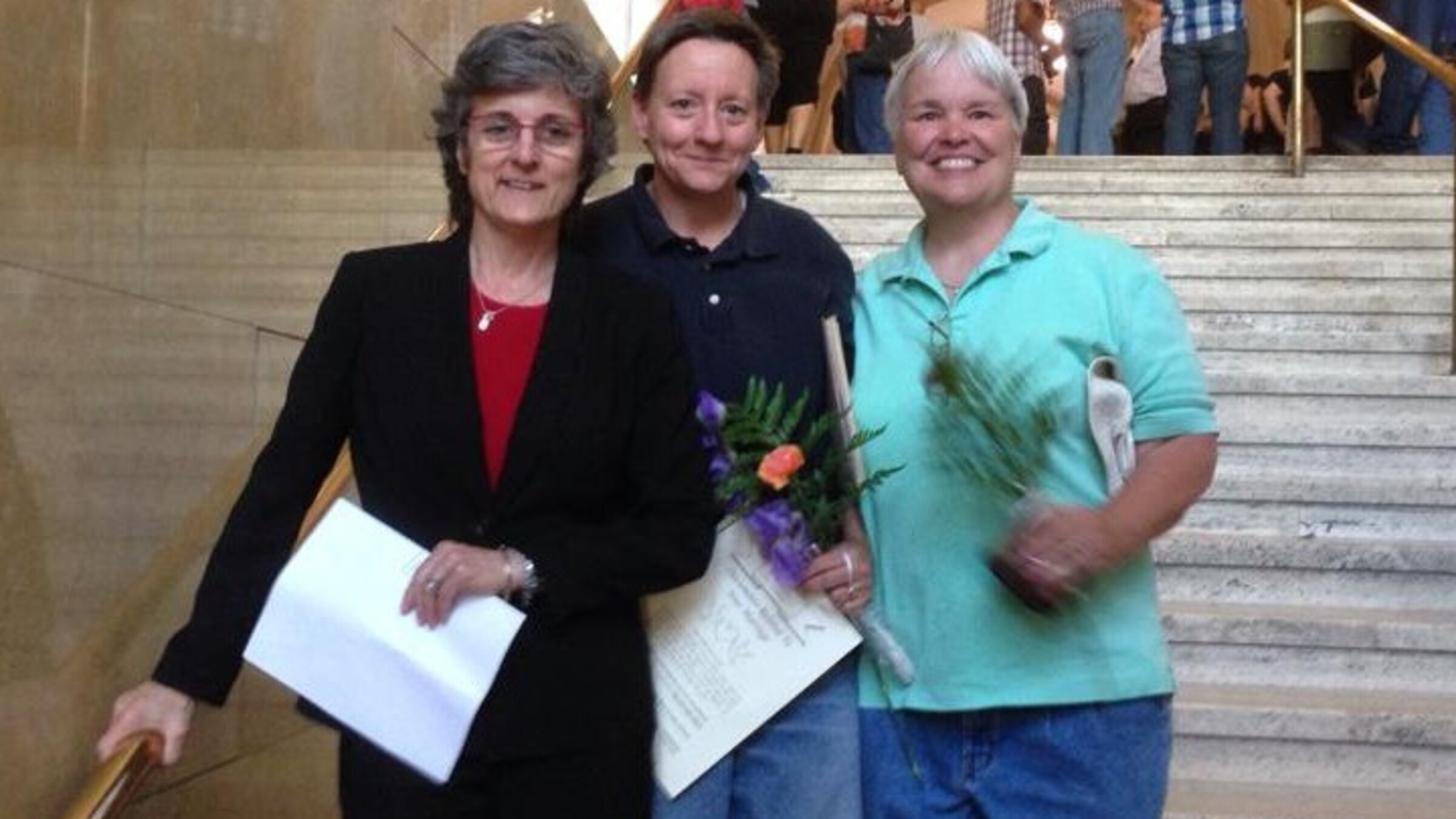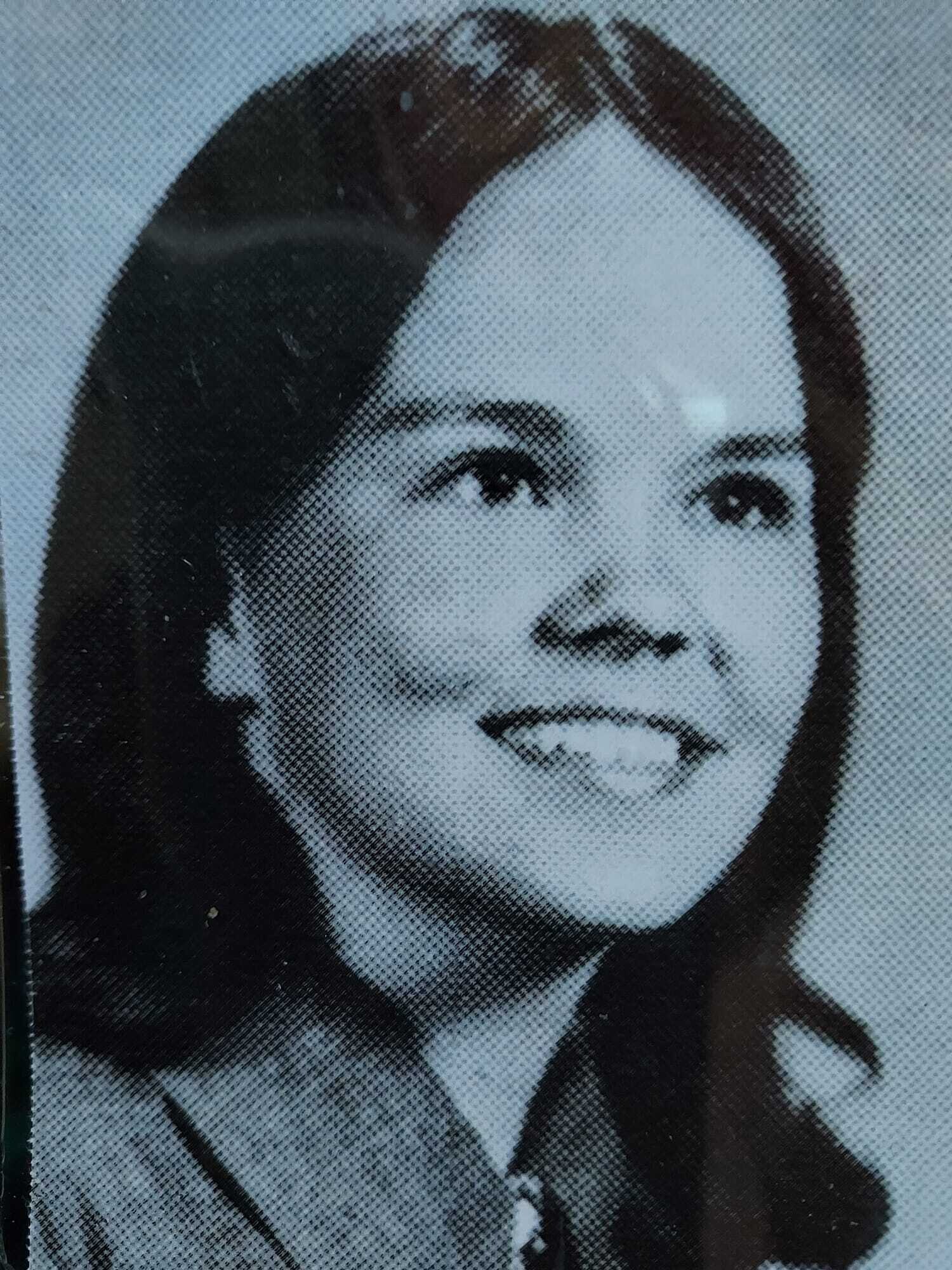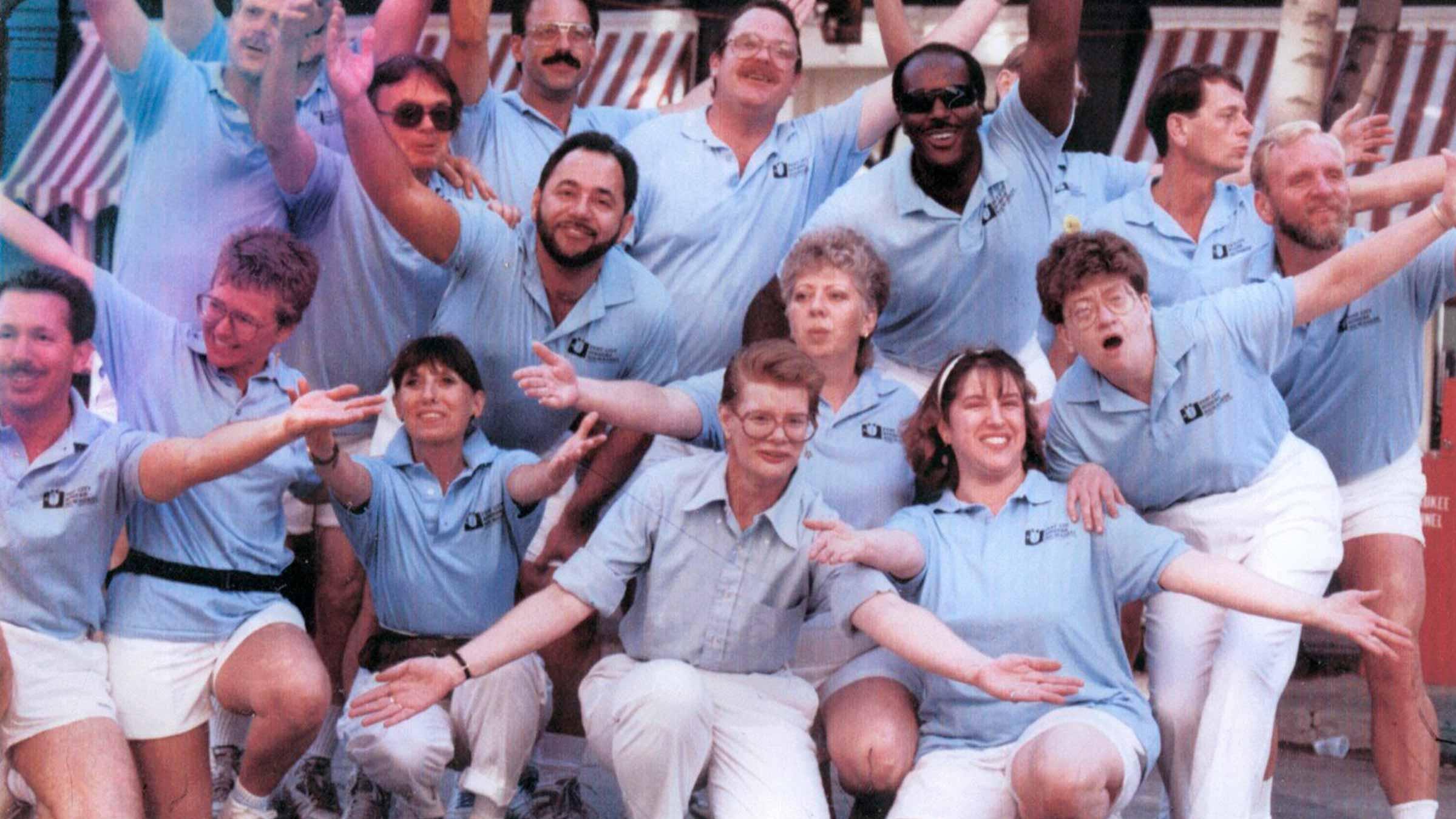
Barb Coyle: a lifetime of music, community and love

"We were the only station in town playing these artists on the radio."
Barb was born in Waukesha, Wisconsin as the oldest of seven children. Her mother was an occupational therapist from Wisconsin, her father was a soldier from Maryland. They met at an East Coast hospital when Barb’s mother treated her father for a leg injury.
By third grade, Barb had attended six schools around the country. During the Cuban Missile Crisis, Barb’s mother brought her children back home to Waukesha, as the family was not allowed at the time to join her father in Germany.
“When I was a freshman in high school, I fell in love with a classmate,” said Barb. “I met her in sixth grade and had a crush on her for years. I did not have eyes for any TV or movie stars, just them.”
Barb graduated from high school in 1971.
Although Barb dated a guy in high school, she did not get serious with anyone until the first year of college. That is when she met her future husband. The couple married and had two children. Her husband went to nursing school, and Barb later went to nursing school herself at UW-Waukesha and UW-Milwaukee. She graduated in 1983.
“It took me 12 years to finish,” said Barb, “and we were married the entire time. I put him through nursing school, so we stayed wed for insurance purposes until I was done.”
“Bob said, this is nice, but can you give it to me typed? And I said, no!” laughed Barb.
Betts gave Barb a thirty-minute trial run from 11:30 p.m. to midnight on Sunday nights. Soon, the show became so popular that it ran ninety minutes, from 10:30 p.m. to midnight. Little did Barb know she had started something that would last twenty years. Women’s Radio Music continued from 1983 to 2002.
“I was working with a woman named Kim Bartels, who was a second shift psychiatric nurse,” said Barb. “She was this perfectly dry, witty, hilarious on-air host. We would get records from Midwest Women’s Music and Olivia Records, so our message was very much women-first. Unfortunately, some of our artists’ music was not locally available, and back then, you could not just go online and buy things. We were the only place you would hear some of these acts.”
“At one concert at the Milwaukee Public Library, I was in charge of the ushers,” said Barb. “I found ten bowling shirts for $1-$2 each at Goodwill, replaced the name badges with write-in name tags, and gave them all plastic pearls. So, there they were, ushers in bowling shirts and pearls.”
Giving back to the community
Over the years, Barb has shared her expertise to support the community. She worked with Jeff Miller to deliver flu shots in Milwaukee’s gay bars. She worked at the BESTD Clinic twice; first as a phlebotomist, and later at the Women’s Health Clinic.
She also wrote for the Wisconsin Light, after contacting editors Jerry Johnson and Dr. Terry Boughner.
“They were open to the idea of having more women’s voices,” said Barb, “and I was really grateful for the opportunity.”
In 1994, Barb was asked to be a PrideFest emcee, alongside performer David Kotke.
“I wasn’t involved with the committee, but they reached out to me,” said Barb. “The event was still a one-day festival in Juneau Park. We had so much fun. All sorts of people came. My job was to announce the performers, and they were all local artists that people loved. I was invited back the next year, and then the festival moved to the Summerfest grounds in 1996.”
Romance, retirement & reflection
Barb and her wife Jill have been together for 37 years. They have long been involved with the local Quaker community. They have also been joined in marriage three times.
“The first time was 2004, when we had a Quaker ceremony,” said Barb. “We were given a beautiful marriage license, which everyone in the congregation signed, and it is hanging in our home today. The second time was in 2008, when we registered as a couple at City Hall for partner benefits. Straight people could not register, as they could get married.”
“The third time was the best,” said Barb. “I was watching Channel 12 News, and they announced at 5 p.m. that people were getting married at the Milwaukee County Courthouse. My wife came home at 5:30 p.m. and I said, ‘we’re going downtown to get married.’ Of course, her reaction was ‘what are you talking about?”
“We were the seventh couple in line, and we were interviewed by the press,” said Barb. “There was just one problem. We got to the counter, and they said, we need a copy of your divorce papers. My wife ran home to get them, and could not find them, so I called my ex-husband, and he no longer had them. So, she kept looking and finally found them. And we were able to get married that same day, after being together for 27 years.”
Barb recently returned to the workforce during a whole new health crisis.
“When COVID broke out, I worked as a temporary public health nurse for the City of Milwaukee,” said Barb. “The response team started four retired Health Department nurses, and soon grew to over one hundred. We started doing telephone work – community outreach, case management, education – and moved to the Wisconsin Center where we did vaccinations. I would load up the vaccines for the other nurses to inject. I did this work for two years, and my wife continued for two additional years.”
Today, the couple is retired from the healthcare industry. They are spending their retirement with family, Quaker friends, home remodeling projects, and local events.
“There used to be dances, every couple of months, and now we don’t have that,” said Barb. “The Beer Garden is long gone, and there really are not places quite like that anymore. There are still some women’s organizations, like Women’s Voices Milwaukee, and programs at the Milwaukee LGBT Community Center. We still get together with friends we have made over the years. But social media has really become the major connector.”
“At 71, I’m not sure what’s happening out there. But I know LGBTQ folks are here, and more accepted.”
 Barb and Jill on their 2014 wedding day, with Judge Mary Triggiano
Barb and Jill on their 2014 wedding day, with Judge Mary Triggiano
recent blog posts
December 17, 2025 | Michail Takach
December 16, 2025 | Michail Takach
December 01, 2025 | Dan Fons
The concept for this web site was envisioned by Don Schwamb in 2003, and over the next 15 years, he was the sole researcher, programmer and primary contributor, bearing all costs for hosting the web site personally.




